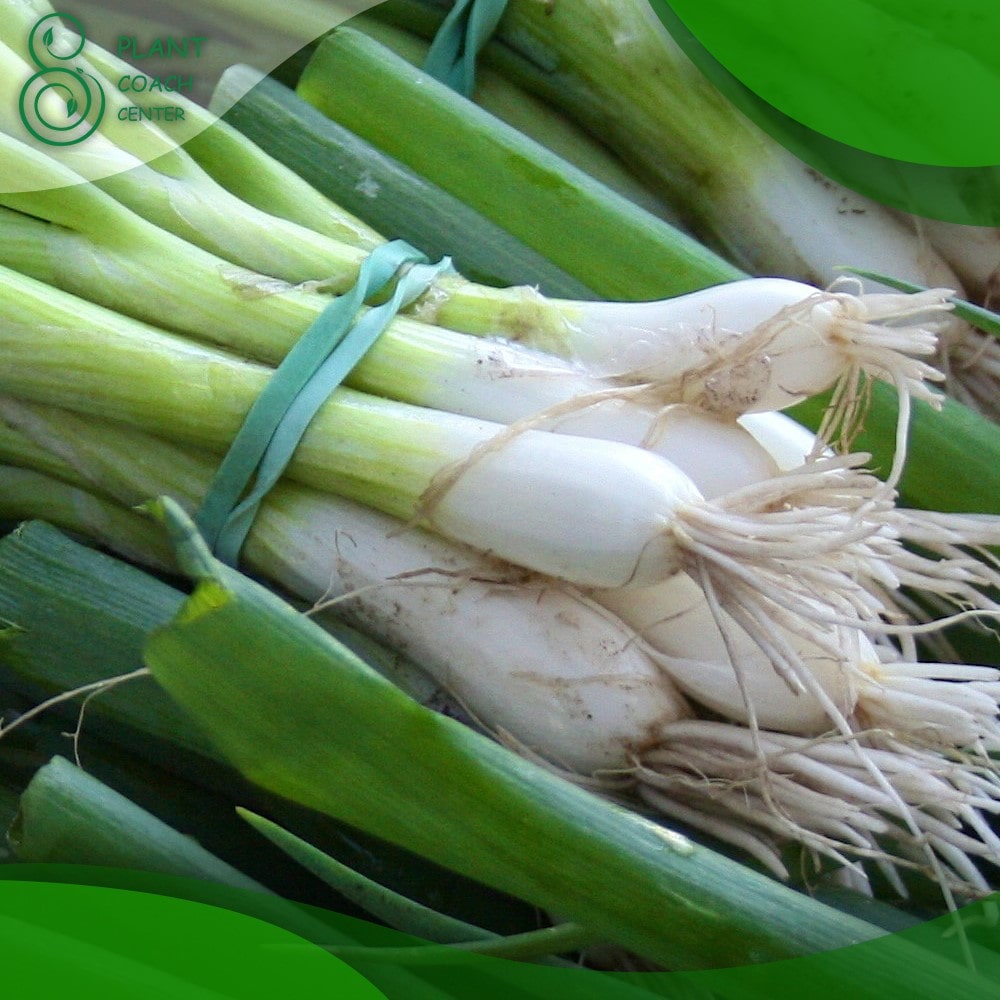Introduction to when to plant out onion seedlings:
Welcome to the comprehensive guide on planting onion seedlings. In this article, we will delve into the art of timing and explore the various aspects of successfully planting out onion seedlings. Whether you’re a novice gardener or an experienced enthusiast, understanding when and how to plant onion seedlings is crucial for a bountiful harvest.
This guide, brought to you by Plant Coach Center (plantcoachcenter.com), will equip you with the knowledge and techniques needed to ensure your onion seedlings thrive.
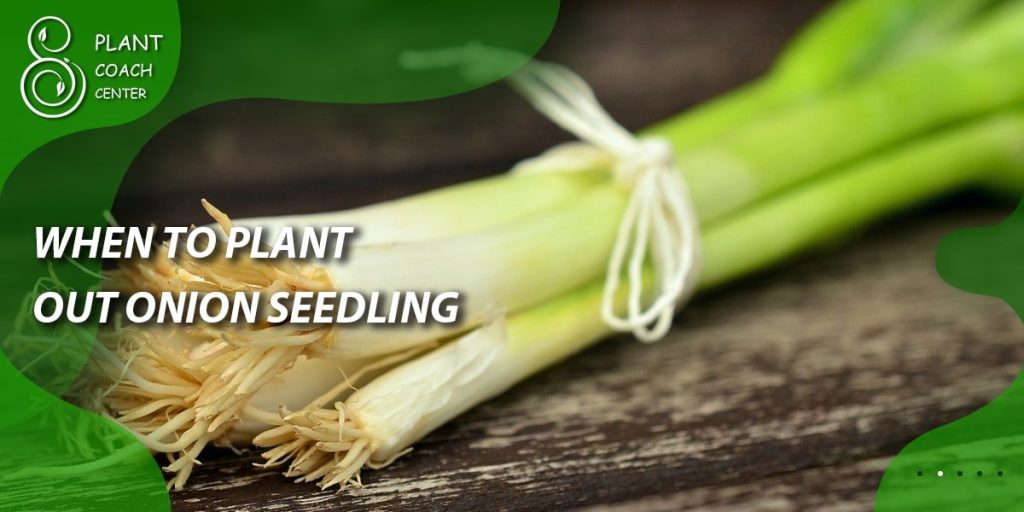
Understanding Onion Seedlings and Planting Requirements
Overview of Onion Seedlings:
Onion seedlings, also known as Allium cepa, are the young and delicate stages of onion plants. These seedlings require specific conditions to develop into healthy and productive onion bulbs. Understanding the anatomy and growth patterns of onion seedlings is essential for successful planting.
Ideal Growing Conditions for Onions:
To provide optimal growing conditions for onion seedlings, consider the following factors:
– Sunlight: Onions thrive in full sunlight, requiring at least 6 to 8 hours of direct sunlight each day.
– Soil: Well-drained soil with a pH range of 6.0 to 7.0 is ideal for onions. Loamy soil enriched with organic matter promotes healthy root development.
– Temperature: Onions prefer cool to moderate temperatures. They grow best in regions with a temperature range of 55°F to 75°F (13°C to 24°C).
– Watering: Onions require consistent moisture to prevent stress and encourage steady growth. Avoid overwatering or allowing the soil to dry out completely.
Factors Affecting Onion Seedling Development:
Several factors can influence the growth and development of onion seedlings:
– Onion Variety: Different onion varieties have varying growth rates, days to maturity, and overall requirements. Choose the variety that suits your preferences and local climate.
– Seed Quality: High-quality seeds are essential for healthy seedling development. Purchase seeds from reputable suppliers.
– Nutrient Availability: Adequate nutrient levels, including nitrogen, phosphorus, and potassium, promote robust seedling growth. Prepare the soil with organic matter and balanced fertilizers.
– Air Circulation: Proper air circulation is crucial to prevent diseases and ensure sturdy seedling growth. Avoid overcrowding seedlings.
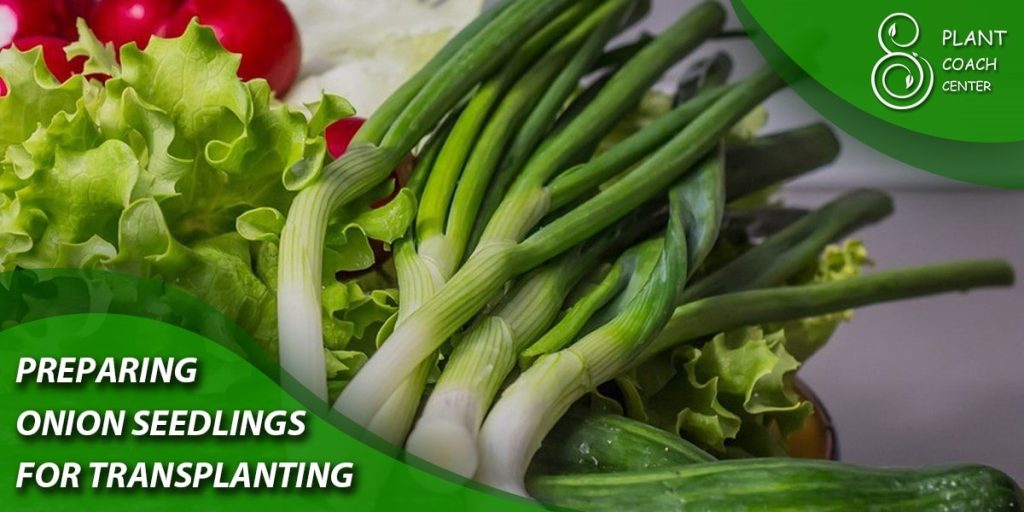
Preparing Onion Seedlings for Transplanting
Starting Onion Seeds Indoors:
Starting onion seeds indoors provides greater control over the germination and early growth stages. Follow these steps for successful seed starting:
- Choosing Onion Varieties:
– Select onion varieties suitable for your climate and preferences. Consider factors such as storage life, flavor, and bulb size.
- Seeding Techniques and Germination Tips:
– Use a well-draining seed starting mix and sow onion seeds at the recommended depth.
– Maintain consistent moisture and provide bottom warmth (around 70°F) for optimal germination.
- Providing Optimal Conditions for Seedling Growth:
– Ensure the seedlings receive sufficient light by using fluorescent grow lights or placing them near a sunny window.
– Maintain a temperature range of 60°F to 70°F (15°C to 21°C) during the seedling stage.
Caring for Onion Seedlings:
Proper care during the seedling stage is vital for strong and healthy plants:
- Watering and Moisture Management:
– Water seedlings regularly, keeping the soil evenly moist but not waterlogged.
– Avoid overhead watering, as it can lead to fungal diseases. Water at the base of the plants instead.
- Providing Adequate Light and Temperature:
– Ensure seedlings receive 14 to 16 hours of light per day. Adjust the height of grow lights to maintain proper distance from the seedlings.
– Maintain a temperature range of 60°F to 70°F (15°C to 21°C) during the seedling stage.
- Fertilization and Nutrient Requirements:
– Begin fertilizing seedlings with a balanced, diluted fertilizer once they develop their second set of true leaves.
– Follow the recommended fertilization schedule and avoid overfertilization, as it can lead to excessive foliage growth.
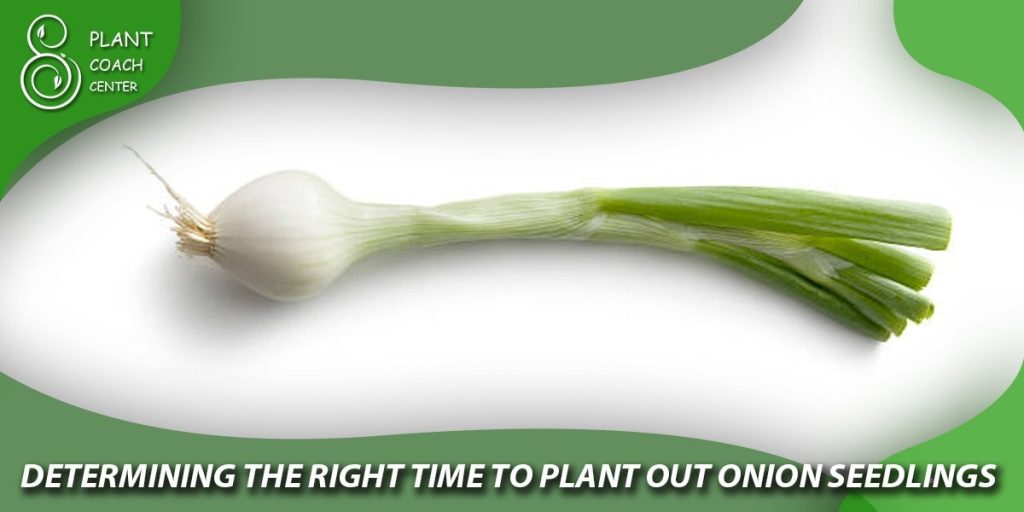
Determining the Right Time to Plant Out Onion Seedlings
Understanding Frost Dates and Climate Considerations:
Frost dates play a crucial role in determining when to plant out onion seedlings. Consider the following factors:
– Last Frost Date: Determine the average date of the last spring frost in your region. This information helps avoid potential frost damage to the tender seedlings.
– Days to Maturity: Different onion varieties have varying days to maturity. Consider this factor when calculating the optimal planting time.
Assessing Seedling Growth and Development:
The growth and development of onion seedlings provide valuable insights into their readiness for transplanting:
– Leaf Development: Onion seedlings should have at least three to four fully developed leaves before transplanting.
– Stem Thickness: The stems of the seedlings should be approximately the thickness of apencil or pencil eraser, indicating sufficient growth and strength.
Considering Regional and Local Factors:
Apart from frost dates, regional and local factors can influence the timing of planting out onion seedlings:
– Climate: Consider the climate in your specific region, including temperature fluctuations and weather patterns.
– Microclimates: Assess microclimates within your garden or growing area, as they can vary due to factors such as sun exposure, wind, or nearby structures.
– Soil Readiness: Ensure that the soil has warmed up sufficiently and is workable. Cold, waterlogged soil can impede seedling growth.
Recommended Timeline for Planting Out Onion Seedlings:
To determine the ideal time for planting out onion seedlings, follow these guidelines:
- Counting Back from the Last Frost Date:
– Subtract the recommended number of weeks for seed starting from the last frost date to determine the approximate planting date.
– Keep in mind that onion seedlings can tolerate some light frost but should be protected from hard freezes.
- Adjusting for Regional Factors:
– Consider regional climate variations and specific onion variety requirements.
– Consult local gardening resources, experienced gardeners, or agricultural extension services for personalized advice.
Preparing the Garden Bed for Onion Transplanting
Soil Preparation Techniques:
Preparing the garden bed is crucial for creating a favorable environment for onion plants:
- Testing Soil pH and Amending if Necessary:
– Conduct a soil pH test to ensure it falls within the recommended range of 6.0 to 7.0 for onions.
– If the pH is too acidic, amend the soil with lime to raise the pH. If it’s too alkaline, add elemental sulfur to lower the ph.
- Improving Soil Drainage and Structure:
– Onions prefer well-drained soil. Improve drainage by incorporating organic matter such as compost or aged manure into the soil.
– Loosen compacted soil to enhance root penetration and oxygen availability.
- Adding Organic Matter and Fertilizers:
– Mix well-rotted compost or aged manure into the soil to enrich it with nutrients and improve moisture retention.
– Apply balanced organic or slow-release fertilizers following package instructions.
Weed Control and Weed Management Strategies:
To minimize competition and ensure the best growing conditions for onion plants:
– Clear the garden bed of weeds before planting out onion seedlings.
– Apply organic mulch around the plants to suppress weed growth and conserve soil moisture.
Mulching and Its Benefits for Onion Plants:
Mulching offers several benefits when planting out onion seedlings:
– Moisture Retention: Mulch helps retain soil moisture, reducing the need for frequent watering.
– Weed Suppression: A layer of mulch inhibits weed growth, minimizing competition and conserving nutrients.
– Temperature Regulation: Mulch acts as an insulating layer, protecting onion bulbs from extreme temperature fluctuations.
Transplanting Onion Seedlings into the Garden
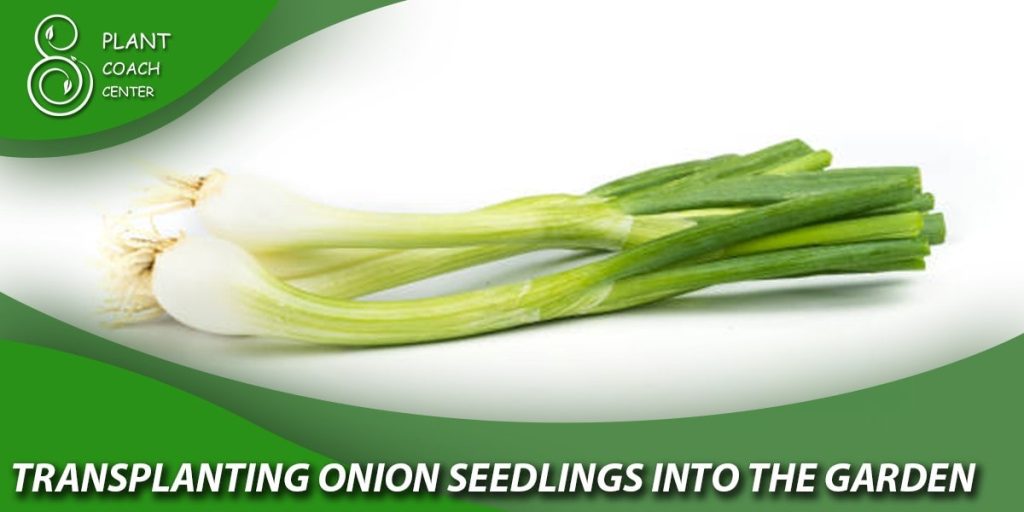
Hardening Off Onion Seedlings:
Before transplanting onion seedlings, acclimate them to outdoor conditions gradually:
- Introduction to Hardening Off:
– Hardening off is the process of gradually exposing seedlings to outdoor conditions, allowing them to adjust to temperature, sunlight, and wind.
– Start the hardening off process about 7 to 10 days before the anticipated transplanting date.
- Gradually Acclimating Seedlings to Outdoor Conditions:
– Begin by placing seedlings in a sheltered, shaded area for a few hours each day, gradually increasing their exposure to sunlight and wind.
– Extend the time and intensity of exposure over the hardening off period until the seedlings can tolerate full sun and outdoor conditions.
Transplanting Techniques and Best Practices:
Follow these techniques and best practices for successful onion seedling transplanting:
- Digging Proper Planting Holes:
– Dig planting holes wide and deep enough to accommodate the root system of the seedlings.
– Space the holes according to the recommended spacing for your onion variety.
- Handling and Placing Seedlings in the Ground:
– Gently remove seedlings from their containers, handling them by the leaves rather than the delicate stems.
– Place seedlings in the prepared holes, ensuring the roots are spread out and not cramped.
- Spacing and Planting Depth Considerations:
– Space onion seedlings according to the recommended spacing for your chosen variety, typically 4 to 6 inches apart.
– Plant seedlings at the same depth they were growing in the containers, burying the roots and part of the stem.
Watering and Post-Transplant Care:
Provide proper care after transplanting to support seedling establishment:
- Irrigation Methods and Watering Schedule:
– Water the transplanted seedlings immediately after planting to settle the soil around the roots.
– Afterward, water regularly, ensuring the soil remains evenly moist but not waterlogged.
- Protecting Seedlings from Environmental Stress:
– Shield seedlings from intense sunlight and strong winds initially by using row covers or providing temporary shade.
– Monitor weather conditions and provide additional protection if necessary, such as during cold snaps or heavy rainfall.
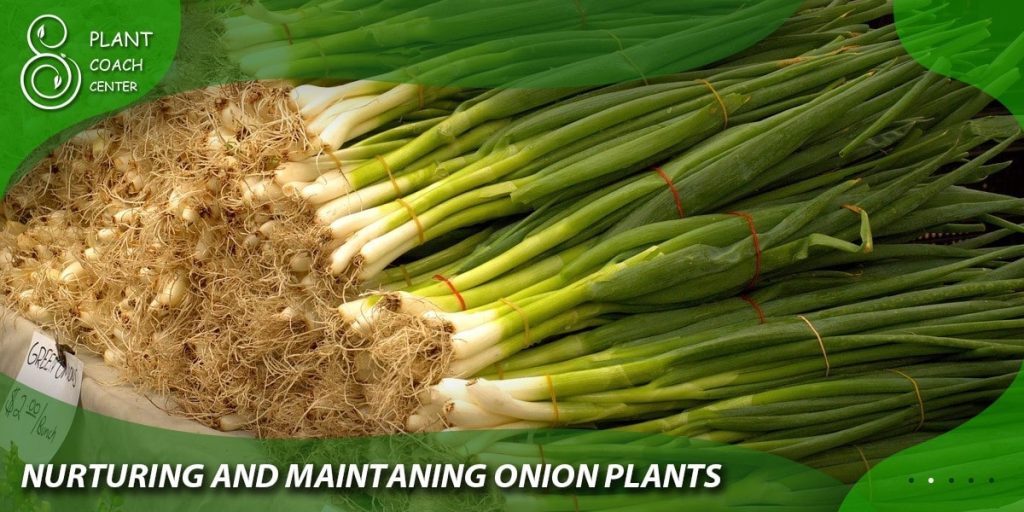
Nurturing and Maintaining Onion Plants
Watering and Moisture Management:
Proper watering is crucial for the growth and development of onion plants:
– Water consistently, aiming to provide around 1 inch of water per week, including rainfall.
– Avoid overwatering, as it can lead to diseases and bulb rot. Ensure the soil has good drainage to prevent waterlogged conditions.
Fertilization and Nutrient Requirements:
To support healthy growth and bulb development, follow these fertilization guidelines:
– Apply a balanced fertilizer or organic amendments during the growing season.
– Monitor the foliage and soil for nutrient deficiencies and adjust fertilization accordingly.
– Avoid excessive nitrogen, as it can promote leafy growth at the expense of bulb development.
Weed Control and Maintenance:
Effective weed management is essential to minimize competition and ensure optimal onion growth:
– Regularly remove weeds by hand, being careful not to disturb the onion roots.
– Mulch around the plants to suppress weed growth and conserve moisture.
– Monitor the garden bed and address weed issues promptly to prevent them from overtaking the onions.
Pest and Disease Management:
Maintaining a vigilant approach to pest and disease management will help protect your onion plants:
– Identify common onion pests such as onion thrips, onion maggots, and aphids. Implement appropriate control measures if necessary.
– Monitor for signs of diseases like onion downy mildew, onion white rot, and onion smut. Take preventive measures and treat infected plants promptly.
– Practice crop rotation to minimize the risk of disease buildup in the soil.
Harvesting and Storing Onion Bulbs:
Knowing when to harvest and properly storing the onion bulbs is crucial for preserving their quality:
– Monitor the foliage for signs of maturity, such as yellowing and wilting.
– Once the foliage has dried and toppled over, gently lift the onions from the soil.
– Cure the onions in a well-ventilated, dry area for several weeks until the outer layers are papery.
– Store cured onions in a cool, dry location with good airflow to prolong their shelf life.
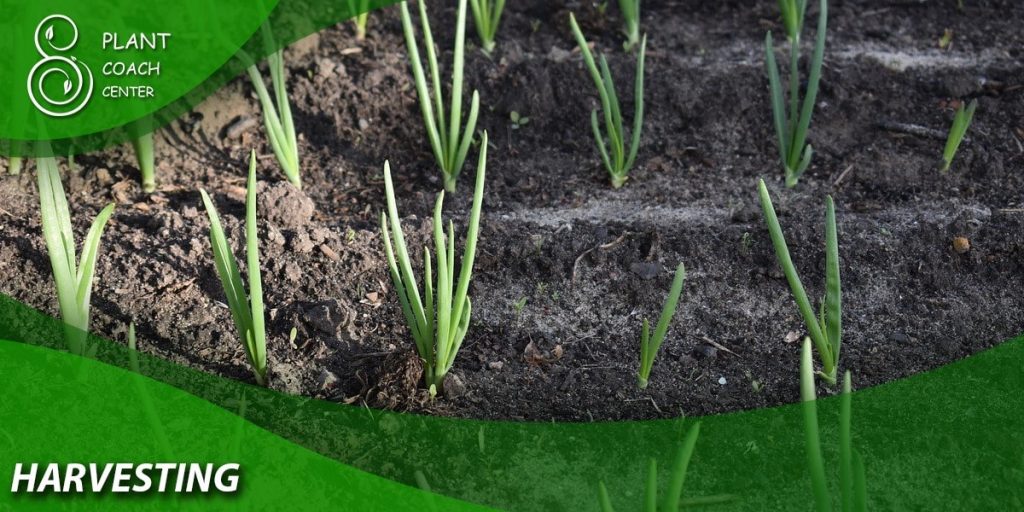
Conclusion:
Mastering the art of planting onion seedlings is a rewarding endeavor for any gardener. By understanding the requirements of onion seedlings, preparing the garden bed, and following proper transplanting and maintenance techniques, you can ensure a successful onion harvest.
Remember to visit Plant Coach Center (plantcoachcenter.com) for more valuable gardening resources and information. Happy planting and enjoy the bountiful rewards of your onion-growing journey!


